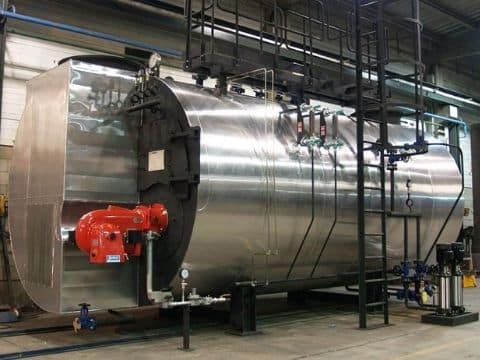What is the difference between a pyrotubular boiler and water tube boiler?
There are two types of common industrial steam boilers:
- The pyrotubular boiler, formed by a steel casing with a tube bundle which the combustion fumes circulate through and heat the water outside the tubes.
- The water-tube boiler, consisting of a bundle of tubes which the water circulates through, and which is crossed externally by the flow of hot gases. Pyrotubular boilers have a defined water level, while water-tube boilers require an additional dome where the vapour chamber is located.
Pyrotubular boiler and water tube uses
The two types have different uses, although they can occasionally be found together. In general, pyrotubular boilers are used up to pressures of 25-30 barg and maximum temperatures of 300ºC with the incorporation of vapour superheaters. Water-tubes, on the other hand, are more suitable for higher pressures and temperatures, and also for vapour production from 50 T/h. Choosing one or the other will depend on each facility.
Advantages and disadvantages of water tube and pyrotubular boiler
Pyrotubular boilers have the advantage of being much more stable in vapour production, since the vapour chamber is fitted in the pressure body in order to deal with peaks in vapour demand. Water-tube boilers are more sensitive to load and pressure fluctuations, although they can vaporise the water in a very short time.
Over recent years, pyrotubular boilers have taken over from water-tube boilers thanks to their robustness, durability and lower investment and operating costs.
